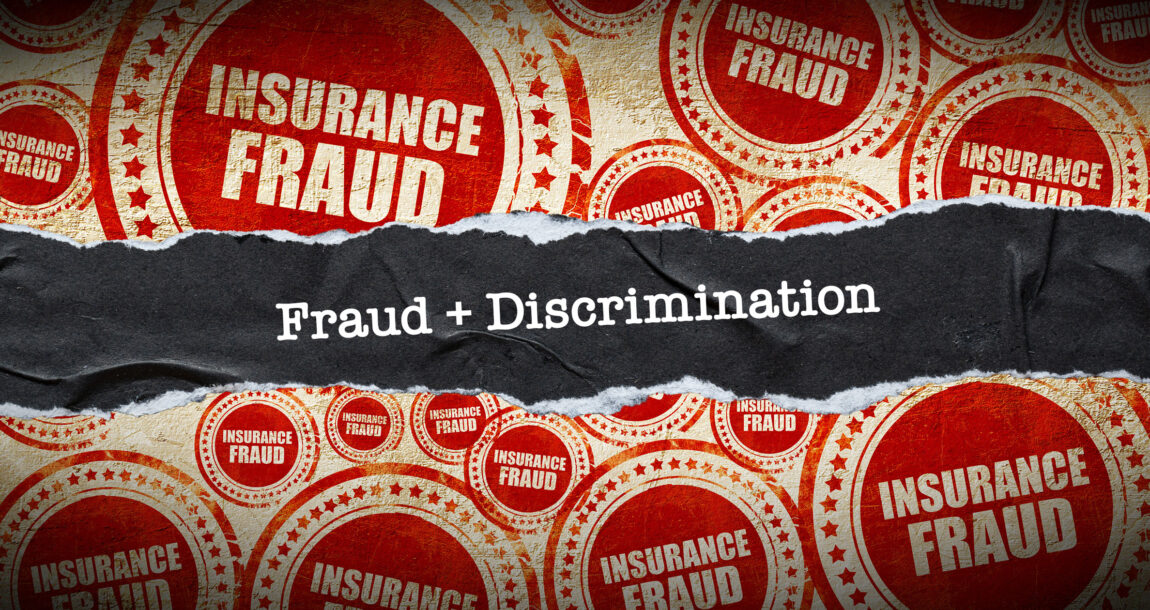Insurance industry finds links between fraud and insurer discrimination

Insurance companies and regulators could reverse rising fraud by engaging underserved communities and supporting insurance literacy efforts, a panel of experts said last week.
The Coalition Against Insurance Fraud webinar featured experts such as Anna Flores, executive director of Consumer Action.
“I think the insurance industry, overall, needs to be…more cognizant of the implications of their policies and practices and the disproportionate impact that it has on underserved communities,” she said.
A “major challenge” for underserved communities is the lack of knowledge about their rights as consumers and the resources that may be available to help them respond to allegations of fraud or other challenges.
“I believe that we can work through community-based organizations who serve as trusted sources of information and assistance for these communities,” Flores said. “They can play a major role in helping communities understand their legal rights and their responsibilities when it comes to insurance and insurance fraud.”
What is ‘underserved?’
Flores acknowledged that “underserved communities have long been subject to systemic policies and practices such as redlining” in financial industries.
These areas tend to be low-income and often have large populations of people of color and other marginalized groups. But disproportionately high premiums can make insurance unaffordable for those panelists say may need it the most.
A 2015 study by the Consumer Federation of America helped spotlight the issue of redlining with a study that found factors like credit history, ZIP code, gender, education, occupation, homeownership status and marital status have “a disproportionate impact on people of color or other protected classes, and perpetuate systemic biases.”
That study found that a driver with excellent credit pays an average annual premium of $592.11. For the same coverage, a driver with low credit pays $1,0195.90, even if their driving record is perfect.
States like Colorado and California are taking proactive steps to address this issue and ensure that all consumers have equal access to affordable insurance. Last week, California launched its Insurance Diversity Index, a benchmarking tool designed to foster diversity, equity, and inclusion in the state's insurance industry.
"The Insurance Diversity Index represents a significant step forward in our ongoing efforts to create a more equitable and inclusive insurance industry,” said Insurance Commissioner Ricardo Lara. “By providing a clear benchmark, we can inspire positive change and ensure that California consumers are served by companies committed to diversity and inclusion."
The cost of fraud
Panelist Curtis Graham, president of Institute4Education and former insurance agent, said “accepted discrimination” with insurance premiums puts an additional financial burden on Americans with limited resources.
He suggested that this can lead them — knowingly or unknowingly — to try to “circumvent the system” to bring costs down.
“They wouldn’t recognize that as fraud. They might say, ‘I’m not committing any fraud’... But the problem is they are committing fraud, and that does put an unfair burden on the insurance companies,” Graham said.
Fraud can cut into profits for insurance companies and “drive up costs” for consumers, most of whom experts said do not commit insurance fraud.
In a 2022 study, the Coalition found that insurance fraud costs the U.S. economy $308.6 billion annually: the equivalent of more than $900 every year for the average American and more than $3,750 for the average American family.
“Every dollar of fraud’s impact on consumer premiums is amplified for those who have fewer dollars in their bank accounts,” said host Doug Heller, director of insurance at the Consumer Federation of America.
A need for ‘insurance literacy’
Experts repeatedly highlighted the need for better insurance education, especially in underrepresented communities, where many consumers do not realize what insurance fraud entails.
Even beyond these communities, an August 2023 study by Verisk and the Coalition Against Insurance Fraud found that 53 million Americans on the whole do not think insurance fraud counts as a crime.
“I think a big part of our role is education,” said Glen Mulready, Oklahoma insurance commissioner. “Just the whole literacy part — general literacy, financial literacy, insurance literacy.”
But panelist Brenda Cude, University of Georgia professor emeritus, said the insurance industry often neglects to provide consumers with a basic level of education, such as what counts as fraud and why.
“There are thousands of people in this country who are delivering financial literacy education programs that typically include nothing about insurance,” she said. “The industry could do more partnering to reach out to more people to make sure insurance is part of other education and other communication.”
Trust issues
Panelists emphasized that for insurance education to be most effective in underserved communities, it must be:
- Easy to read and understand
- Available in multiple languages
- Communicated through trusted community groups
To achieve this, they recommended that insurance companies partner with local organizations. Underserved communities generally do not trust insurance organizations themselves, Mulready and Cude said.
“I would recommend that the industry work closer with community-based organizations as distribution points for your communications,” Flores said. “If you want to reach underserved communities, you need to work with the local organizations that serve these communities and are trusted sources of information.”
Fighting internal bias
Insurance companies can also help to build trust with underrepresented communities by monitoring their internal anti-fraud operations to ensure fair treatment, Mulready and Heller suggested.
Insurance companies risk “missing fraud” because of historical bias against underrepresented communities, Heller warned.
“Active insurance fraud can happen from the consumer who makes a false claim to the producer all the way up to the corporation that defrauds their customer,” he added. “I think that’s always the role of the Coalition to recognize that all the fraud adds up. Whether it’s from a consumer or a company, we all pay for it in the end.”
The Coalition Against Insurance Fraud, founded in 1993, is on a mission to “combat all forms of insurance fraud” and boasts nearly 100 members, including national and international groups spanning multiple industries.
Rayne Morgan is a Content Marketing Manager with PolicyAdvisor.com and a freelance journalist and copywriter.
© Entire contents copyright 2023 by InsuranceNewsNet.com Inc. All rights reserved. No part of this article may be reprinted without the expressed written consent from InsuranceNewsNet.com.





Captive insurance: How Congress can help fix high property insurance costs
DPL survey: advisors can grow revenue, improve client plans with annuities
Advisor News
- Study asks if annuities help financial advisors build client relationships
- California’s big pension funds lost billions in stock market selloff. Can they recover in time?
- Economist: Tariffs could dampen GDP growth; raise unemployment, inflation
- Medium tenure for workers remains at about 5 years
- Making the most of Financial Literacy Month
More Advisor NewsAnnuity News
- Emerging digital annuity sales process cutting cycle times by 94%, IRI says
- In times of market volatility, FIAs make the difference
- Charitable gift annuities gaining in popularity
- Nationwide and Annexus establish first actively managed mutual fund within a RILA
- AM Best Comments on the Credit Ratings of Talcott Financial Group Ltd.’s Subsidiaries Following Announced Reinsurance Transaction With Japan Post Insurance Co., Ltd.
More Annuity NewsHealth/Employee Benefits News
- More cancer coverage for firefighters clears hurdle
- AG files suit against Syracuse claiming misappropriated funds
- Legislation for more cancer coverage for firefighters clears the Iowa Senate
- Gentry Mountain Mining Under Fire Due to Recent Allegations
- Rural Hospitals Question Whether They Can Afford Medicare Advantage Contracts
More Health/Employee Benefits NewsLife Insurance News
- Proxy Statement (Form DEF 14A)
- Jackson Announces New President and Chief Risk Officer
- Proxy Statement (Form DEF 14A)
- Proxy Statement (Form DEF 14A)
- AM Best Revises Issuer Credit Rating Outlook to Stable for Life Insurance Company of Alabama
More Life Insurance News